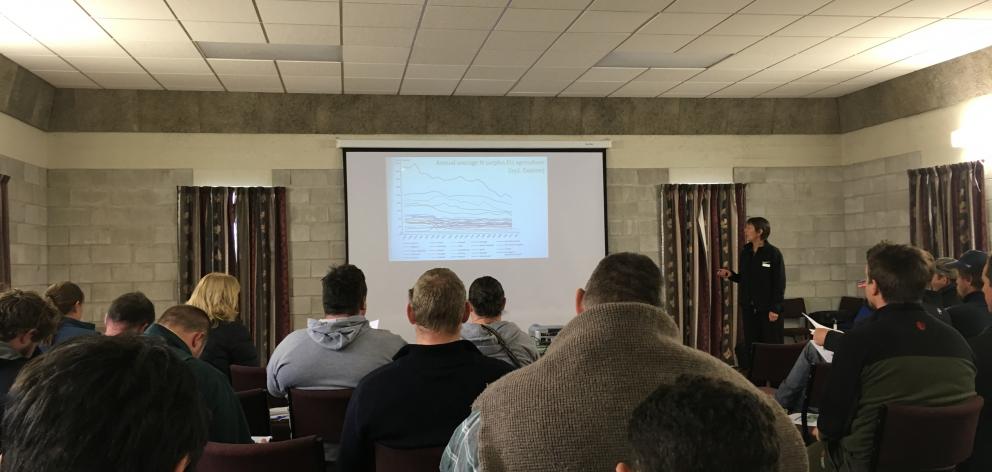
But urinary nitrogen has the biggest risk of leaching known, DairyNZ senior scientist Dawn Dalley says.
It can have anywhere from 250kg to 800kg of nitrogen per hectare; it is very concentrated.
Dr Dalley was talking about research into reducing the environmental impact of wintering dairy cows at a DairyNZ information session in Hinds recently. It was part of the Forages for Reduced Nitrate Leaching (FRNL) collaborative research programme, into diverse pasture species and crops for dairy, arable and sheep and beef farms.
Around 40 dairy farmers took a break from the farm to attend the DairyNZ presentation which also included the Lincoln University Dairy Farm benchmark farm comparison results, from South Island Dairying Development Centre chief executive Ron Pellow.
The difference between nitrogen inputs and nitrogen outputs is called whole farm nitrogen surplus.
In the dairy research, these inputs came from fertiliser, clover fixation and feed.
The outputs were in milk, meat and feed. Some nitrogen was taken up by plants, which was then eaten by cows. The resulting dung and urine caused gaseous losses and leaching into the ground.
Dr Dalley said most of the whole-farm nitrogen surplus was lost to the environment through leaching or gaseous means.
Nitrogen surplus in New Zealand farms was higher than most countries in Europe. However Europe had stricter regulations on nitrogen surplus.
DairyNZ research options included a reduction in the amount of nitrogen inputs through feed and fertiliser, with increased efficiency, converting nitrogen inputs to products, and the increased intake of nitrogen by plants.
It also included capturing the surplus nitrogen and redistributing it outside effluent times.
Dr Dalley said the Southern Dairy Hub farm, in Southland, had reduced the nitrogen surplus and leaching by using fodderbeet with less nitrogen inputs.
It involved less stocking rate of cows per hectare; from 3.1 cows to 2.6 cows per hectare and two herds eating fodderbeet and two herds eating kale.
So far, the potential benefits of the crops included reduced crude protein content, improved metabolisable energy (ME), improved yield and nitrogen uptake.
The risks, however, were that nitrogen supply and demand was not in sync and there was increased risk of phosphorus and sediment loss, with microbial contamination.
Dr Dalley said the research to date showed using fodderbeet reduced urinary nitrogen excretion.
The reduced intake had reflected no detriment in milk production.
However, it was still unknown how this would affect animal health, and milk production levels long-term.
Dr Dalley said reducing nitrogen surplus meant less fertiliser and feed being used but the question was how to export more of the nitrogen off farm in product.
While the profitability of the system was still unknown, the potential was there, she said.
Nitrous oxide reduction was a ''real win-win in terms of environmental perspective''.












